Your Personal Brand: The Key to Career SuccessAs you progress through your career, you’ll realize that your success depends not only on your skills and expertise but also on learning how to build a personal brand. When someone hears your name, what comes to mind? That’s your brand. Building your personal brand requires you to focus on what others think of you and how you come across in different situations. Here are some examples of what a strong personal brand might look like:
Fast-track your career with personal branding. When you intentionally craft your brand, you demonstrate that you understand the importance of image and reputation and actively work to ensure that others perceive you in the best light. Steps to Defining Your Personal BrandYour personal brand is an important factor in determining career success. Employers, business partners, and collaborators seek unique people with the skills and qualifications. It’s vital to think strategically about your brand and create a strong, memorable name and identity that sets you apart from the competition. Even if you work for yourself and not for someone else, this is vital information for you to have and implement for your success. Step #1: Define Your Personal Brand The first step in developing your personal brand is to define it. First, think about what you want to be known for and how you want to be perceived by others. Next, consider your values, strengths, and unique qualities. These will form the foundation of your personal brand. Step #2: Craft Your Message Once you have defined your personal brand, crafting a message that communicates it effectively is important. This message should be concise, memorable, and authentic. Then, use it in your online profiles, resume, and elevator pitch to communicate your value proposition to potential employers and clients. Step #3: Build Your Online Presence Your online presence is crucial to your personal brand. Make sure your profiles are up-to-date and optimized for search. Consider creating a website or blog to showcase your expertise and interests. Strengthen your reputation as an authority in your field by posting in-depth insights and opinions online. Step #4: Network and Build a Professional Community Networking is another key component of building your personal brand. Attend industry events, join professional organizations, and connect with people in your field. Building a strong professional community provides valuable opportunities for collaboration, mentorship, and career growth. Step #5: Maintain Your Personal Brand Your personal brand is not a one-time effort -- it requires ongoing maintenance. Keep your online profiles current, continue developing your skills and expertise, and actively engage with your community. Step #6: Embrace Your Authentic Self Remembering that your brand should be authentic to who you are is crucial. Don't try to be someone you're not or adopt a persona that doesn't feel genuine. Instead, embrace your unique qualities and let your personality shine through. * * * * * * * * * * * * * * * With consistent effort, you’ll make your personal brand the cornerstone of your professional success. When you connect authentically with potential employers, colleagues, and partners, building trust and respect and attracting new opportunities becomes almost automatic. Take the time to invest in your personal brand to reap the rewards of professional growth, recognition, and success. SOURCE: About the AuthorMandy Fard is a Certified Professional Resume Writer (CPRW, CMRW) and Recruiter with decades of experience in assisting job seekers, working directly with employers in multiple industries, and writing proven-effective resumes. How to Follow Your Own Vision of Career SuccessHaving a rewarding career depends upon whether or not you know how to follow your own vision of career success. Otherwise, you’re likely to spend your days trying to live up to the expectations of others or mindlessly drifting from one job to the next. Of course, success itself means different things to different people. For some, it’s a matter of earning more money and climbing the corporate ladder. For others, it may mean to learn how to step down the corporate ladder. In the end, it’s more about stretching their skills and contributing to society. Make your work life more satisfying and build accomplishments that you can be proud of. Use this checklist to plan your future and put your plans into action. Planning for Career Success
Implementing Your Career Plan
About the AuthorMandy Fard is a Certified Professional Resume Writer (CPRW, CMRW) and Recruiter with decades of experience in assisting job seekers, working directly with employers in multiple industries, and writing proven-effective resumes. Fast-Track Your Career With Personal BrandingIn today’s world, it’s important to take your personal brand seriously if you want others to take you seriously. Try out these tips for understanding the importance of personal branding, defining your personal brand, and marketing your brand for greater career success. Understanding the Importance of Personal BrandingYour personal brand helps you to:
Defining Your Own Personal BrandThese tips will help you create an outstanding personal brand:
Marketing Your Personal BrandUse these strategies to expand your reach:
Branding used to be for cattle and big corporations, but now everyone is in on the act. Take charge of your personal brand to achieve more career success and guide your life in a direction that is meaningful for you. Source: https://www.market-connections.net/blog/fast-track-your-career-with-personal-branding About the AuthorMandy Fard is a Certified Professional Resume Writer (CPRW, CMRW) and Recruiter with decades of experience in assisting job seekers, working directly with employers in multiple industries, and writing proven-effective resumes. How Your Online Presence Can Impact Your CareerAppearing online has proved a highly effective method for many people to advance in their career. Recruiters and employers alike are looking online more than ever before. Professional networking sites such as LinkedIn continue to grow in popularity when it comes to looking for a job or finding suitable candidates to fill a job. Furthermore, building a strategic and professional online presence will expand your network beyond the industry or geographical area where you work. Groups online and multiple social media platforms facilitate your interactions with other professionals regardless of region. With a stronger network in your field, you open yourself up to more job opportunities and visibility in your industry. So why not create an online personal brand to help advance your career? Creating an online presence can help you stand out from others in your field. When applying for a higher position, having an online presence shapes what employers see when they look you up online. Curating an online presence shows creativity and gives future employers opportunities to learn about you beyond a resume. The online persona you present online can be someone’s first impression about you. Here’s how you can create a captivating online presence: Introduce yourself, your values, and your skillsThink about the company you want to work for and what values are important to you.
Cater your online presence to your employersFind creative ways to display your skill set and set high expectations of what you can bring to the table.
Join communities or websites related to your fieldYou can use the Internet to network, too! By joining communities related to your field, you open yourself up to potential job opportunities in the future or a colleague you can go to when you’re looking for advice.
Create content, or personal projectsDisplaying content or personal projects shows that you are dedicated to improving your skills. It might also show unique skills, such as problem-solving, sales, or customer service. Add credibility through testimonials or reviewsTestimonials or reviews give social proof to potential employers of the strengths you can bring to the job. Ask employers and colleagues to send personal testimonials through email or LinkedIn so you can show the assets you will bring to an organization. The more you invest in your online presence, the more potential employers can imagine how well you would fit within their company culture. Everyone who applies for the next job will be submitting a resumé and cover letter. These things can display your skills and work experience, but developing an online presence can also show your personality and values. By developing an online presence, you have the opportunity to stand out from the rest of the applicants. Future employers can get an insight into your own values, personality, and work ethic - and get to know you on a deeper level than they would just reading your resume. The work you do to build an online presence will undoubtedly leave a positive impression on future employers and help you advance in your career! About the AuthorMandy Fard is a Certified Professional Resume Writer (CPRW, CMRW) and Recruiter with decades of experience in assisting job seekers, working directly with employers in multiple industries, and writing proven-effective resumes. Building your personal brandBecoming an influencerHow to build your own brand1. Your personal brand is one of your biggest assets.
2. Your personal brand can take your business to places you never thought possible. 3. What Is a Personal Brand? 4. A personal brand is all- encompassing. It's about who you are and what you do. 5. Your personal brand is how you present yourself to your ideal audience. 6. Your personal brand includes your:
7. Thanks to the internet and the power of social media, every person can be their own brand.
8. We all have the tools to build powerful personal brands. 9. The crucial question is whether you are actively taking control of your brand. 10. It’s always better when you’re in control of the process. 11. So, how do you actively build an effective personal brand? 12. Why Do You Need to Build a Personal Brand? 13. Every entrepreneur, coach, consultant, or freelancer should be building their own brand. 14. Personal Branding Allows You to Stand Out from the Competition 15. Your competitors can’t bring what you bring to the table. 16. You have unique:
17. ...that set you apart from everyone else. 18. Building your personal brand allows you to highlight your uniqueness. 19. Think about Rolex and how they’ve set themselves apart from the competition. 20. The more you work to build your personal brand, the greater the edge you’ll have over your competition. 21. Personal Branding Allows You to Charge a Premium Price 22. The stronger your brand, the more people want your services, and the higher price you can charge. 23. This is exactly why Nike is able to charge so much for their shoes. 24. By working hard to build your personal brand, you too can charge a premium price. 25. Personal Branding Highlights Your Expertise 26. With every piece of content that you share...
27. ...you establish yourself as an expert in your field. 28. The more you demonstrate your expertise, the more your audience will trust you and come to you to solve their problems. 29. Personal Branding Allows You to Attract Your Ideal Audience 30. When you’re known as the expert in your industry:
31. Tony Robbins is a prime example of this. 32. He attracts huge audiences of people who want to fulfill their potential. 33. Do you want to experience the Tony Robbins effect? 34. Personal Branding Puts You in Charge of the Narrative 35. Your personal brand will evolve, whether you want it to or not. If you:
36. ...then you’re already building your personal brand. 37. The question is whether you’re intentionally shaping the narrative of your brand. 38. The beauty of intentional personal branding is that it ensures that you’re actively shaping your own narrative. 39. Personal Branding Increases Your Visibility 40. The more you build your personal brand, the more visible you’ll become.
41. As your fan base grows, you can expect to be featured in the media. 42. The more you’re featured in media outlets, the more opportunities you’ll have to speak in front of crowds. 43. Building your personal brand and building your platform go hand-in- hand. 44. Personal Branding Shapes What Content You Share 45. Only share content that aligns with and promotes the values of your personal brand. 46. Personal Branding Connects You More with Individuals 47. The more you work to build your personal brand, the more individuals will want to connect with you. 48. Personal Branding Allows You to Become an Influencer 49. There are some significant benefits to being an influencer... 50. Big brands want to work with influencers that have a large audience, which can result in more revenue for you. 51. You often receive free things from companies who are interested in partnering with you. 52. You receive media requests to speak at, or even just attend, events. 53. Are you starting to see the power of your personal brand? 54. There are few things more powerful than your personal brand. 55. Are you ready to start building your personal brand? 56. How to Build a Personal Brand 57. Step #1 Determine Who You Really Are 58. Ask yourself:
59. The answers to these questions should shape your personal brand. 60. Step #2 Determine What You Want to Accomplish 61. Answer these questions:
62. Step #3 Identify Your Target Audience 63. To identify your core audience, ask yourself these questions:
64. When determining your core audience, it can be helpful to create a persona which represents your ideal client. 65. Include the following information in the persona:
66. Step #4 Determine Your Unique Selling Proposition (USP) 67. I help (target person) to (achieve X) so that they can (outcome). 68. Your USP should portray the heart of who you are and how you help your audience. 69. It may help to give your USP a unique name that will stick in people’s minds. 70. Creating your USP gives you a high degree of clarity about what your brand is all about. 71. Step #5 Start Treating Yourself as a Brand 72. In every communication with your audience, you stay true to your brand message. 73. It also means creating a strong, compelling website. 74. It means creating a media page or media kit on your site for media inquiries. 75. It could mean having an assistant answer your emails. 76. You have to treat yourself like you truly are: a powerful brand that has a powerful message. 77. Step #6 Optimize Your Website 78. Your website is one of the primary places people get to know who you are and what you do. 79. Your website also functions as one of the primary ways you turn visitors into paying clients. 80. First impressions are really important when it comes to your website. 81. Have a professional logo designed. 82. Show off your Unique Selling Proposition. 83. Use professional photographs. 84. Use testimonials. 85. Present a clear call-to-action. 86. Create a compelling “About” page. 87. Create a Services page. 88. Give away free resources. 89. Create a Contact page. 90. Step #7 Develop Your Content Strategy 91. One effective content strategy is the “Pillar Method.” It works like this… 92. At set intervals create a longer piece of “pillar” content. 93. Publish your pillar content on your primary platform. 94. Take your pillar content and cut it up into smaller, shareable pieces of content. 95. Share the smaller pieces of content across all your channels. 96. Repeat the process again and again. 97. By using the “Pillar Method” for your content strategy, you ensure that every piece of content you post is always on brand. 98. In addition to using the “Pillar Method,” you can also simply repurpose content into different formats. 99. Step #8 Constantly Add Value to Your Audience 100. The main thing people should take away when interacting with your brand is how much value you provide. 101. Step #9 Build a Community 102. Start a private Facebook group. 103. Host live events. 104. Create a membership site. 105. Now Is the Time to Build Your Brand 106. “We all have a personal brand whether we think about it that way or not. So, let’s be intentional about it.” Kathy Klotz-Guest 107. Here’s a quick summary of how to build your brand:
108. The more you do those things, the more you’ll attract an audience of raving fans. Need help? Reach out to https://www.market-connections.net. How to use self branding for businessSelf branding and career growthYour personal brand is no longer something to be taken lightly, if you want to be taken seriously in business. This is to outline the value of personal branding, identifying your own brand, and promoting your brand for career growth. The value of personal brandingWhat your personal brand does
How to create a personal brandIdentify your personal brand
Marketing Your Personal BrandUse these strategies to expand your reachIncrease your visibility. Post fresh content on your website or blog regularly. Stay active in social media. Look for opportunities to teach classes, give presentations, or write articles in your field.
Branding used to be for cattle and big corporations, but now everyone is in on the act. Take charge of your personal brand to achieve more career success and guide your life in a direction that is meaningful for you. Writing a LinkedIn Summary
LinkedIn Summary Help
The “Summary” section of your LinkedIn profile is a vital part of your LinkedIn presence. Knowing how to write a good LinkedIn Summary will have a direct impact on whether or not a visitor will continue reading the rest of your profile. You have 2,000 characters to give readers a brief snapshot of who you are.
The first 2-3 sentences need to instantly get your prospects interested in your profile — or, even better, get them excited about reading the rest of your profile. How do you add more value to the company, or solve problems better than other job candidates? Your LinkedIn Summary can set you apart from other jobseekers on LinkedIn by demonstrating that you understand what employers want — and what you have to offer that meets that need. How to write a good LinkedIn SummaryLinkedIn Summary Examples
Use these ideas as examples of what to write in LinkedIn Summary:
Write naturally and conversationally. In contrast to your résumé, you should use pronouns in your Summary. Speak in the first person, not third person. (“I did such-and-such.”) Write as if you’re speaking to an individual reader. Make it personal. Be sure to emphasize outcomes — as well as what makes you uniquely qualified to do the job you do. Never loose sight of the fact that your resume and your Linked profile are not the same thing. There are many diferences when it comes to the use of a resume vs. LinkedIn profile. Unlike the rules of resume writing, please be conversational and informal in your tone when it comes to writing a LinkedIn Summary. Use contractions (“you’re” instead of “you are”). Every word counts! And pay attention to grammar and spelling. Make sure there are no mistakes in your profile. Re-read and edit it. Have a colleague, friend, or spouse read it. Copy-and-paste it into a word processing program and run a spell-check on it. You can also use asterisks, dashes, hyphens, and other keyboard characters to format the Summary and make it easier to read. Try to find a common THREAD through your work. Then, once you have a theme, use storytelling principles to write your Summary as a narrative. Have a beginning, a middle, and an end. LinkedIn Summary Character Limit
There is a limit of 2,000 characters (not words) to write in the Summary (About) section of your LinkedIn profile.
Your Summary can be anywhere from a few sentences up to a few paragraphs. But don’t waste any words — make the most dramatic, powerful, attention-getting statement you can. Don’t use any more words than is necessary, and don’t be overly flowery in your language. The point of the first sentence is to get the prospect to read the second sentence. And the next sentence. And the next. On LinkedIn, a 'character' can be a letter, number, space, and punctuation. The current LinkedIn set up and design of a profile only shows the first two lines of your Summary or About section to the reader. The reader will then have to click on SEE MORE to see the rest. So, the two-liner opening is only about 200-250 characters (or about 25-42 words). Make sure you use these words to write a compelling opening . ELEVATOR PITCHHow to create an elevator pitchLearn how to write an elevator pitch as a short summary to talk about yourself in a compelling and concise way. Knowing how to do this right is imperative. Your elevator pitch tells the employers about what your expertise is, how you can contribute and what is the impact of your contribution. Try out these suggestions for preparing and presenting your introduction. Preparing Your Elevator Pitch
Presenting Your Elevator Pitch
An effective elevator pitch entices people’s curiosity and makes them want to hear more. Formulate an elevator pitch to tell the employers why hiring you is the right decision. How to Make a Career Out of CreativityMaybe you’d like to turn your creativity into a career but jokes about starving artists make you a little nervous. In reality, it is possible to make a living while making art. Whether you’re a drama student trying to figure out what to do after graduation or a professional thinking about making a career change, you can do something artistic with your life. Find out how to channel your creative skills into a rewarding career. How to start a creative career?Getting Started While there are many paths to developing a creative career, the first steps are often similar. A strong foundation will help you navigate your way to success. Use these strategies:
Being self-employedMore than 40% of creative workers are self-employed, according to the Arts Council. Consider freelancing or starting your own business. Follow these tips:
Revising Your Current PositionSmart companies value creative employees because they overcome challenges and spot promising opportunities. Regardless of your job title, you’ll be an asset if you approach your work like an artist.
Consider these ideas:
Find work that engages your talents and imagination. Use your art to earn a living or take a creative approach to whatever career you choose. 25 Strategies to give an All-Star SpeechWhat is your elevator pitch?How to give a professional speech
Did you know that giving a speech tops the list of most common fears. Standing in front of a group of people, hoping you don’t mess up, and praying that the words come out right is frightening. Try these tips to help you stay calm and give that all-star speech that you’re capable of giving...
How to preapre your elevator pitch?
|
Categories
All
powered by Surfing Waves
AuthorMandy Fard is a Certified Professional Resume Writer (CPRW, CMRW) and Recruiter with decades of experience in assisting job seekers, working directly with employers in multiple industries, and writing proven-effective resumes. Archives
July 2024
|
-
Greater Los Angeles
and Kern County
-
[email protected]
.



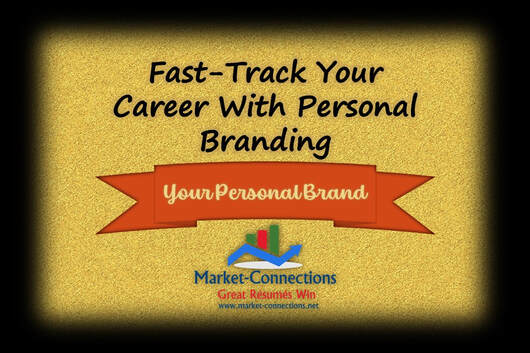

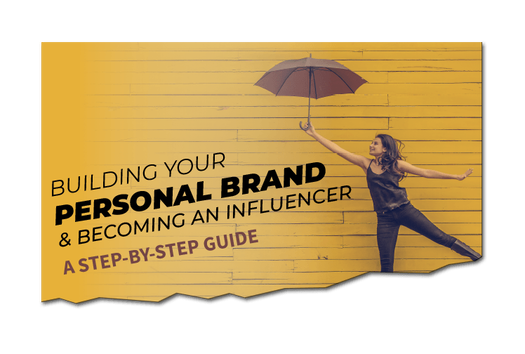




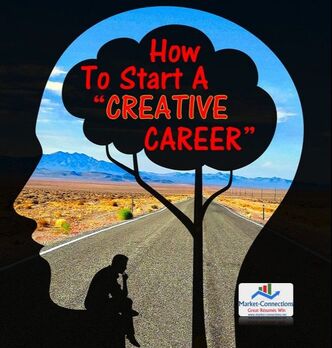
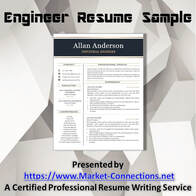
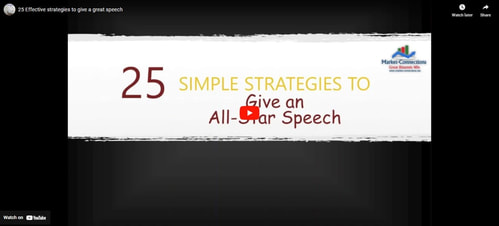

 RSS Feed
RSS Feed



